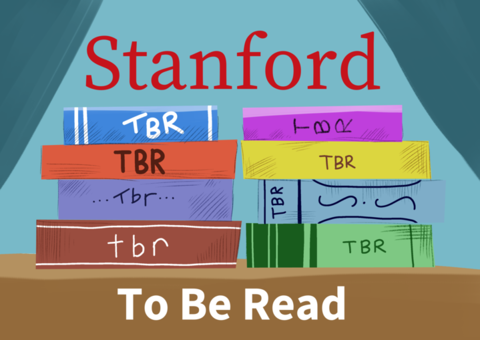In her column “Stanford TBR” (to be read), Cate Burtner recommends books that would resonate with the Stanford community — a reading list compiled for outside the classroom.
This article is a review and includes subjective thoughts, opinions and critiques.
In class this week, I learned a word to describe Tommy Orange’s “There There”: polyphonic, or multi-voiced. The term was adopted from literary critic Mikhail Bahktin’s description of Dostoevsky’s novels, and is ultimately borrowed from music theory — many voices coming together to create a cohesive piece of music. In “There There,” these voices work together to create a beautiful euphony of sound, and a complex narrative that is well worth a read.
The novel is told through twelve different perspectives, each written with its own distinct style and voice. Each focalizing character is connected to the Native American community in Oakland, and all plan on attending the Big Oakland Powwow, the event at which the story culminates. Throughout the novel, the story explores important issues affecting the Native American community as well as the complexities of living in the age of information while trying to explore one’s own identity.
I want to recommend “There There” for my final column of the year not only because it is an important book for gaining cultural perspectives and engaging with contemporary issues, but also because it is a good book. The story is undeniably creative and unique, and its representations of people feel raw and real. The novel is also set in Oakland (and I love recommending Bay Area novels on here), providing a lens to think about the land we inhabit and the incredible diversity of the communities in the Bay. However, it is also important to enjoy the reading experience of books that are often written off as “important” or “relevant” over pleasurable to consume.
Even though each character narrates one chapter at a time by themselves, readers get a strong sense of their connectedness forged by history, family and communal ties. We get to see how the characters see one another and the complex ways in which they are linked. Opal and Jacquie are half-sisters who participated in the occupation of Alcatraz in 1970. The character Dene Oxendene is working on a documentary to continue his late uncle’s legacy. Characters are bound together in unexpected ways as long-lost children and parents. There is a deep sense of tradition and the ubiquitous, sometimes clashing, presence of contemporary technology. While technology holds the highly-educated character Edwin back when he becomes addicted to the Internet, it propels the young character Orvil forward as he learns Native dance through Youtube videos.
Each voice felt so distinct that I was amazed Orange wrote this entire novel alone. In Edwin’s chapter, it is clear that he has had a sort of ‘failure to launch’ syndrome. We are not told this, we are shown it through his narration style. When we follow Orvil, an awkward teenager, the writing had a sense of something not quite fitting. Later, in Jacquie’s section, which is told through the lens of a very intentional character, we get straightforward prose with many cumulative sentences. It reads like a train chugging along on its tracks. The chapters also switch between first, second and third-person narration, a great addition to the polyphonic structure of the novel.
“There There” captures well the different ways that people talk and express themselves. Orange also fully rounds out his characters in an admirable way. It is clear that he knows the entire lives of each of his characters, even though we are only presented with a snapshot of their stories in this novel. Maybe some stories wouldn’t give the perspective and backstory of a drug dealer, but Orange recognizes the humanity and the hidden stories we can find in everyone.
On top of the novel’s main narrative and the multiple voices of the Native community that come together at the powwow, the novel touches on real-world issues affecting Indigenous communities today. “There There” discusses suicide and suicide prevention, alcoholism, gun violence and mental illness in a way that feels natural and woven into the story, rather than heavy-handed or preachy. As his characters navigated these issues, I was deeply impressed by Orange’s authentic representation of human beings, the choices we make and the choices that are made for us.
Some time, perhaps after finals and when Stanford’s summer finally begins, I strongly recommend reading Tommy Orange’s “There There.” And, if you like this one, perhaps pick up Orange’s newly-released novel “Wandering Stars,” a sequel-prequel to “There There.” Best of luck to all on finals, and happy summer reading!
